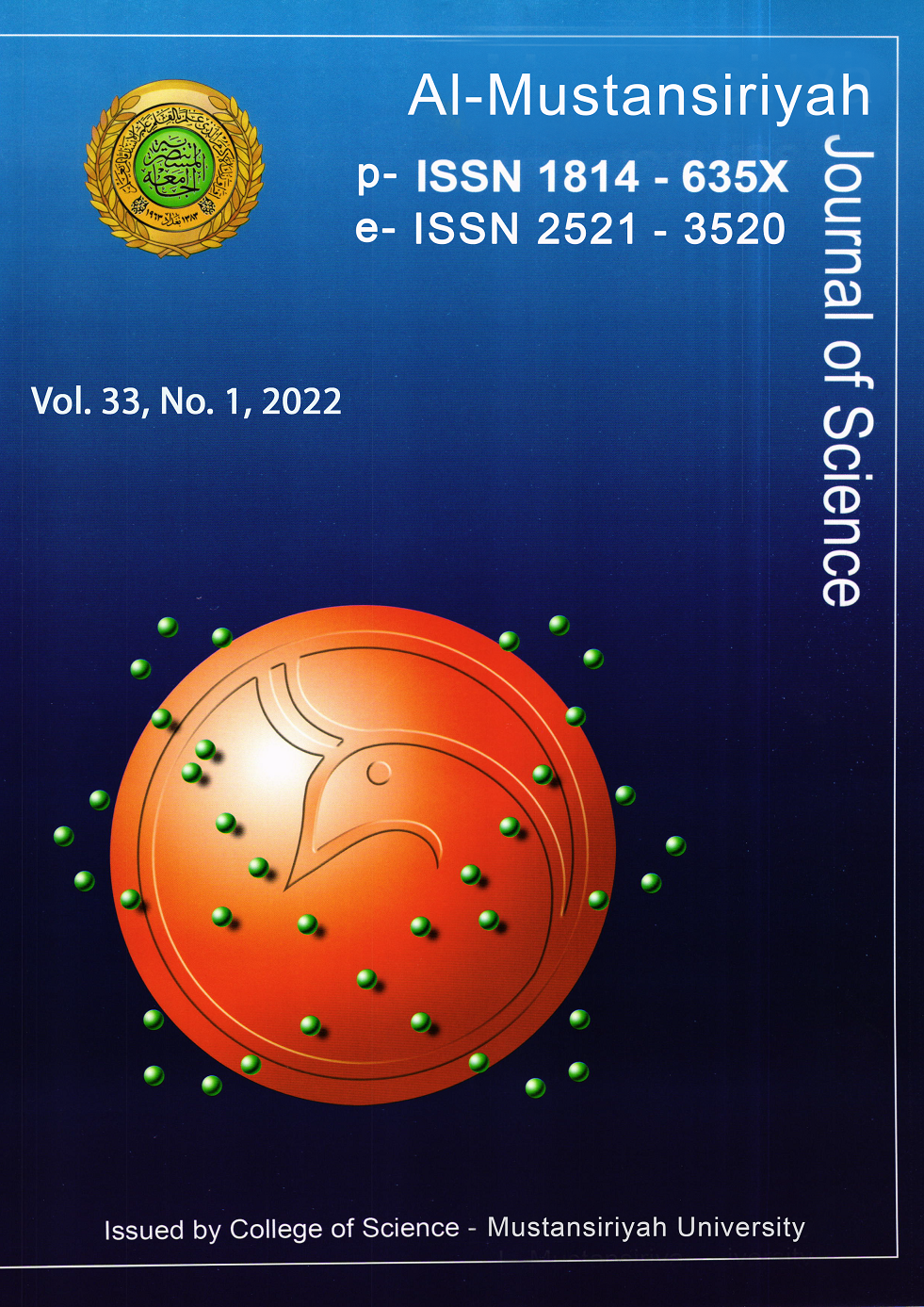A New Medical Dressing with Silver Nanoparticles to Treat Diabetic Foot Patient
DOI:
https://doi.org/10.23851/mjs.v33i1.1073Keywords:
Silver, diabetic foot, Antibacterial activityAbstract
In this study, we prepared medical dressings with silver nanoparticles to treat diabetic foot patient by photochemical reduction process of silver ions using sodium citrate and UV radiation. Antibacterial activity of dressing with silver nanoparticles against bacteria associated with diabetic foot was studied by disk diffusion method. It was observed that the bacteria did not grow on the culture medium where the medical gauze was impregnated with silver nanoparticles.
Downloads
References
C. S. Mantzoros."obesity and diabetes" ,humana press, totowa, New Jersey, pp. 136-225, 2006.
Bauifan Ajm. The diabetic foot. Med. International: 21(7):271-274, 1993.
S. C. Mishra, K. C., A. Chhatbar, Kashikar and A. Mehndiratta. Diabetic foot. BMJ. 0116;359:j5064, 2017.
W.Jeffcoate and K. Bakker. World Diabetes Day: footing the bill. Lancet 2005 6736(05): 66437-9-9,2005.
P. A. Lazzarini, S. E. Hurn, M. E. Fernando, S.D. Jen, S. S. Kuys , M. C. Kamp and L. F. Reed. Prevalence of foot disease and risk factors in general inpatient populations: a systematic review and meta-analysis. BMJ Open. 23;5(11): e008 544, 2015.
S. Bhat, S. Mary, A. P. Giri, and M. J. Kulkarni. Advanced glycation end products indiabetic complications. In: Mechanisms of vascular defects in diabetes mellitus. Advances in Biochemistry in Health and Disease. Springer, Cham. 17:423-49,2017
L. C. Rogers, R. G. Frykberg, L. J. Sanders. The diabetic Charcot foot: recognition,evaluation and management. In: Armstrong DG, Lavery LA, eds. Clinical care of the diabetic foot. 3rd ed.99, 2016.
International Guidelines Team. National Institute for Health and Care Excellence clinical guideline 19. Diabetic foot problems: prevention and management. Updated 2016.
A. J. M. Boulton. The diabetic foot. Medical clinics of north AM. 72 (6) : 1513-1530,1988.
D. M. Citron, E. J. C. Goldstein, Vreni Merriam C. V., B. A. Lipsky and M. A. Abramson Bacteriology of moderate-to-severe diabetic foot infections and in vitro activity of antimicrobial agents. J. CL. Microbiol; 2819-2828, 2007.
C. N. Dang, Y. D. Prasad, A. J. Boulton and E. B. Jude. Methicillin resistant Staphyloco- ccus aureus in the diabetic foot clinic: a worsening problem. Diabet. Med. 20: 159-161, 2003.
E. M. Shankar, V. Mohan, G. Premalatha, R. S. Srinivasan and A. R. Usha. Bacterial etiology of diabetic foot infections in South India.Eur. J. Intern. Med. 16: 567-570, 2005.
C. G. Diaz, J. Altclas, A. Jasovich, G. Mikaelian, G. Fiks and E. Caro. Microbiology and conservative surgery of serious infections of the diabetic foot. Enferm. Infect. Microbiol. Clin. 10: 451-455, 1992.
A. Abdulrazak, Z. I. Bitar, A. A. Al-Shamali and L. A. Mobasher, Bacteriological study of diabetic foot infections,Journal of Diabetes and its Complications, 19( 3);138-141, 2005.
G. C. Schito. The importance of the development of antibiotic resistance in Staphylococcus aureus. clinical Microbiol infection, 1, 3-,2006.
S.H.Gillespie and P.M.Hawkey Principles and practice of clinical bacteriology. Chischester: John Wiley & Sons, 59-60 2006.
G. F. Gad R. A. El-Domany, H. M Ashour., Characterization of Pseudomonas aeruginosa isolated from clinical and environmental samples in Minia, Egypt: prevalence, antibiogram and resistance mechanisms. Journal of antimicrobial chemotherapy, 60(5), 1010-1017, 2007 .
S. Mustafi S., N. Rivero, J. C. Olson, P. D. Stahl, Barbieri. Regulation of Rab5 function during phagocytosis of live Pseudomonas aeruginosa in macrophages. Infection and immunity, 81(7), 2426-2436,2013.
R. Choudhury, S. Panda, S. and V. Singh. Emergence And Dissemination of Antibiotic Resistance: A Global Problem. Indian journal of medical microbiology, 30(4), 384,2012.
H. Alhamed Alduihi. Antibacterial activity of Bacillus subtilis isolated from soiles from Aleppo city against some pathogenic bacteria, Master thesis,Aleppo university, faculty of science, 2016.
H. Y. Lee, H. K. Park, Y. M. Lee, K. Kim, S. B. Park. Apractical procedure for producing silver nanocoated fabric and itsantibacterial evaluation for biomedical applications. Chem. Commun. 2959-2961 2007.
A. B. G Lansdown. A pharmacological and toxicological profile of silver as an antimicrobial agent in medical devices, advances in pharmacological sciences. Adv. Pharmacol. Sci., 1-16,2010.
H. Bao, X. Yu, C. Xu, X. Li, Z. Li, D. Wei, Y. Liu. New Toxicity Mechanism of Silver Nanoparticles: Promoting Apoptosis and Inhibiting Proliferation. PLoS One, 10, e0122535, 2015.
A. Katsumiti, D. Gilliland, I. Arostegui, M. P. Cajaraville. Mechanisms of toxicity of Ag nanoparticles in comparison to bulk and ionic Ag on mussel hemocytes and gill cells. PLoS One 10, e0129039,2015.
G. A. Sotiriou, S. E. Pratsinis. Antibacterial activity of nanosilver Ions and particles. Environ. Sci. Technol. 44, 5649- 5654,2010.
T. Maneerung, S. Tokura and R. Rujiravanit. Impregnation of Silver Nanoparticles into Bacterial Cellulose for Antimicrobial Wound Dressing. Carbohydr. Polym. 72, 43-51,2008.
R. J. B.Pinto, P. A. A. P. Marques, C. P. Neto, T. Trindade, S. Daina and P. Sadocco, Antibacterial Activity of Nanocomposites of Silver and Bacterial or Vegetable Cellulosic Fibers. Acta Biomater. 5, 2279-2289,2009.
S. Pal, R. Nisi, M. Stoppa, M. and A. Licciulli. Silver-functionalized bacterial cellulose as antibacterial membrane for wound-healing applications. ACS omega, 2, 3632-3639, 2017.
M. B. Coyle Manual of Antimicrobial Susceptibility Testing. American Society for Microbiology, 39 pages, 2005.
Downloads
Key Dates
Published
Issue
Section
License
Copyright (c) 2022 Al-Mustansiriyah Journal of Science

This work is licensed under a Creative Commons Attribution-NonCommercial 4.0 International License.
(Starting May 5, 2024) Authors retain copyright and grant the journal right of first publication with the work simultaneously licensed under a Creative Commons Attribution (CC-BY) 4.0 License that allows others to share the work with an acknowledgement of the work’s authorship and initial publication in this journal.






















